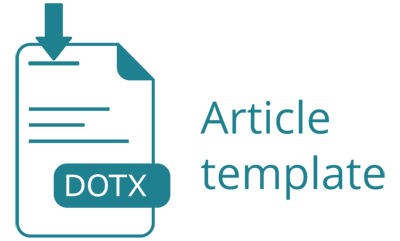Optimasi Parameter Support Vector Machine Dengan Algoritma Genetika Untuk Analisis Sentimen Pada Media Sosial Instagram
DOI:
https://doi.org/10.31598/sintechjournal.v6i1.1245Keywords:
Sentimen Analysis, Support Vector Machine, Genetic AlgorithmAbstract
Social media is an online media that users use to interact with each other by expressing themselves by giving comments, and one example is Instagram. All the collected comments will form a public opinion. This opinion can be used with sentiment analysis to become information. The method commonly used to carry out sentiment analysis is classification using machine learning. One of the machine learning that is often used is the Support Vector Machine (SVM). However, on non-linear problems such as sentiment analysis, SVM requires the kernel to map vectors into high-dimensional spaces to solve non-linear problems. The problem faced in using the kernel is to choose the optimal parameters for the classification model to produce a good classification model. This study proposes a new approach to obtain optimal parameters for SVM using Genetic Algorithm (GA). This study designed an SVM-GA classification model from the data collection, processing, classification, and evaluation stages. The results showed that the best accuracy produced with parameters optimized with the genetic algorithm was 81.6%, or an increase of 2.4% from the SVM sentiment analysis method without GA optimization.
References
Liu Bing, Sentiment Analysis – Mining Opinions, Sentiments, and Emotions. New York: Cambridge University Press, 2015.
M. Tika Adilah, H. Supendar, R. Ningsih, S. Muryani, and K. Solecha, “Sentiment Analysis of Online Transportation Service using the Naïve Bayes Methods,” J. Phys. Conf. Ser., vol. 1641, no. 1, 2020, doi: 10.1088/1742-6596/1641/1/012093.
M. Z. Naf’an, A. A. Bimantara, A. Larasati, E. M. Risondang, and N. A. S. Nugraha, “Sentiment Analysis of Cyberbullying on Instagram User Comments,” J. Data Sci. Its Appl., vol. 2, no. 1, pp. 88–98, 2019, doi: 10.21108/jdsa.2019.2.20.
A. S. Neogi, K. A. Garg, R. K. Mishra, and Y. K. Dwivedi, “Sentiment analysis and classification of Indian farmers’ protest using twitter data,” Int. J. Inf. Manag. Data Insights, vol. 1, no. 2, p. 100019, 2021, doi: 10.1016/j.jjimei.2021.100019.
W. Kaswidjanti, H. Himawan, and P. D. P. Silitonga, “The accuracy comparison of social media sentiment analysis using lexicon based and support vector machine on souvenir recommendations,” Test Eng. Manag., vol. 82, no. 3–4, pp. 3953–3961, 2020.
P. M. Nirmala Dharmapatni and N. L. P. Merawati, “Penerapan Algoritma Support Vector Machine Dalam Sentimen Analisis Terkait Kenaikan Tarif BPJS Kesehatan,” J. Bumigora Inf. Technol., vol. 2, no. 2, pp. 105–112, 2020, doi: 10.30812/bite.v2i2.904.
W. A. Luqyana, I. Cholissodin, and R. S. Perdana, “Analisis Sentimen Cyberbullying Pada Komentar Instagram dengan Metode Klasifikasi Support Vector Machine,” J. Pengemb. Teknol. Inf. dan Ilmu Komput. Univ. Brawijaya, vol. 2, no. 11, pp. 4704–4713, 2018.
D. J. Haryanto, L. Muflikhah, and M. A. Fauzi, “Analisis Sentimen Review Barang Berbahasa Indonesia Dengan Metode Support Vector Machine Dan Query Expansion,” J. Pengemb. Teknol. Inf. dan Ilmu Komput. Univ. Brawijaya, vol. 2, no. 9, pp. 2909–2916, 2018.
M. Zhao, C. Fu, L. Ji, K. Tang, and M. Zhou, “Expert Systems with Applications Feature selection and parameter optimization for support vector machines : A new approach based on genetic algorithm with feature chromosomes,” Expert Syst. Appl., vol. 38, no. 5, pp. 5197–5204, 2011, doi: 10.1016/j.eswa.2010.10.041.
F. Samadzadegan, A. Soleymani, and R. Ali Abbaspour, “Evaluation of genetic algorithms for tuning SVM parameters in multi-class problems,” 11th IEEE Int. Symp. Comput. Intell. Informatics, CINTI 2010 - Proc., pp. 323–327, 2010, doi: 10.1109/CINTI.2010.5672224.
L. K. Ramasamy, S. Kadry, and S. Lim, “Selection of optimal hyper-parameter values of support vector machine for sentiment analysis tasks using nature-inspired optimization methods,” Bull. Electr. Eng. Informatics, vol. 10, no. 1, pp. 290–298, 2021, doi: 10.11591/eei.v10i1.2098.
H. Harafani, “Support Vector Machine Parameter Optimization to Improve Liver Disease Estimation with Genetic Algorithm,” SinkrOn, vol. 4, no. 2, p. 106, 2020, doi: 10.33395/sinkron.v4i2.10524.
D. Whitley, Computer Science A Genetic Algorithm Tutorial. 1993.
I. A. Ahmad Sabri, M. Man, W. A. W. Abu Bakar, and A. N. Mohd Rose, “Web Data Extraction Approach for Deep Web using WEIDJ,” Procedia Comput. Sci., vol. 163, no. July, pp. 417–426, 2019, doi: 10.1016/j.procs.2019.12.124.
M. P. Simatupang and D. P. Utomo, “Analisa Testimonial Dengan Menggunakan Algoritma Text Mining Dan Term Frequency- Inverse Document Frequence (Tf-Idf) Pada Toko Allmeeart,” KOMIK (Konferensi Nas. Teknol. Inf. dan Komputer), vol. 3, no. 1, pp. 808–814, 2019, doi: 10.30865/komik.v3i1.1697.
A. Hassanat, K. Almohammadi, E. Alkafaween, E. Abunawas, A. Hammouri, and V. B. S. Prasath, “Choosing mutation and crossover ratios for genetic algorithms-a review with a new dynamic approach,” Inf., vol. 10, no. 12, 2019, doi: 10.3390/info10120390.
I. Braga, L. P. Do Carmo, C. C. Benatti, and M. C. Monard, “A note on parameter selection for support vector machines,” Lect. Notes Comput. Sci. (including Subser. Lect. Notes Artif. Intell. Lect. Notes Bioinformatics), vol. 8266 LNAI, no. PART 2, pp. 233–244, 2013, doi: 10.1007/978-3-642-45111-9_21.
P. Bajpai and M. Kumar, “Genetic algorithm–an approach to solve global optimization problems,” Indian J. Comput. Sci. Eng., vol. 1, no. 3, pp. 199–206, 2010
Downloads
Published
How to Cite
Issue
Section
License
Copyright (c) 2023 I Putu Dedy Wira Darmawan, Gede Aditra Pradnyana, Ida Bagus Nyoman Pascima

This work is licensed under a Creative Commons Attribution-NonCommercial-ShareAlike 4.0 International License.











1.png)




